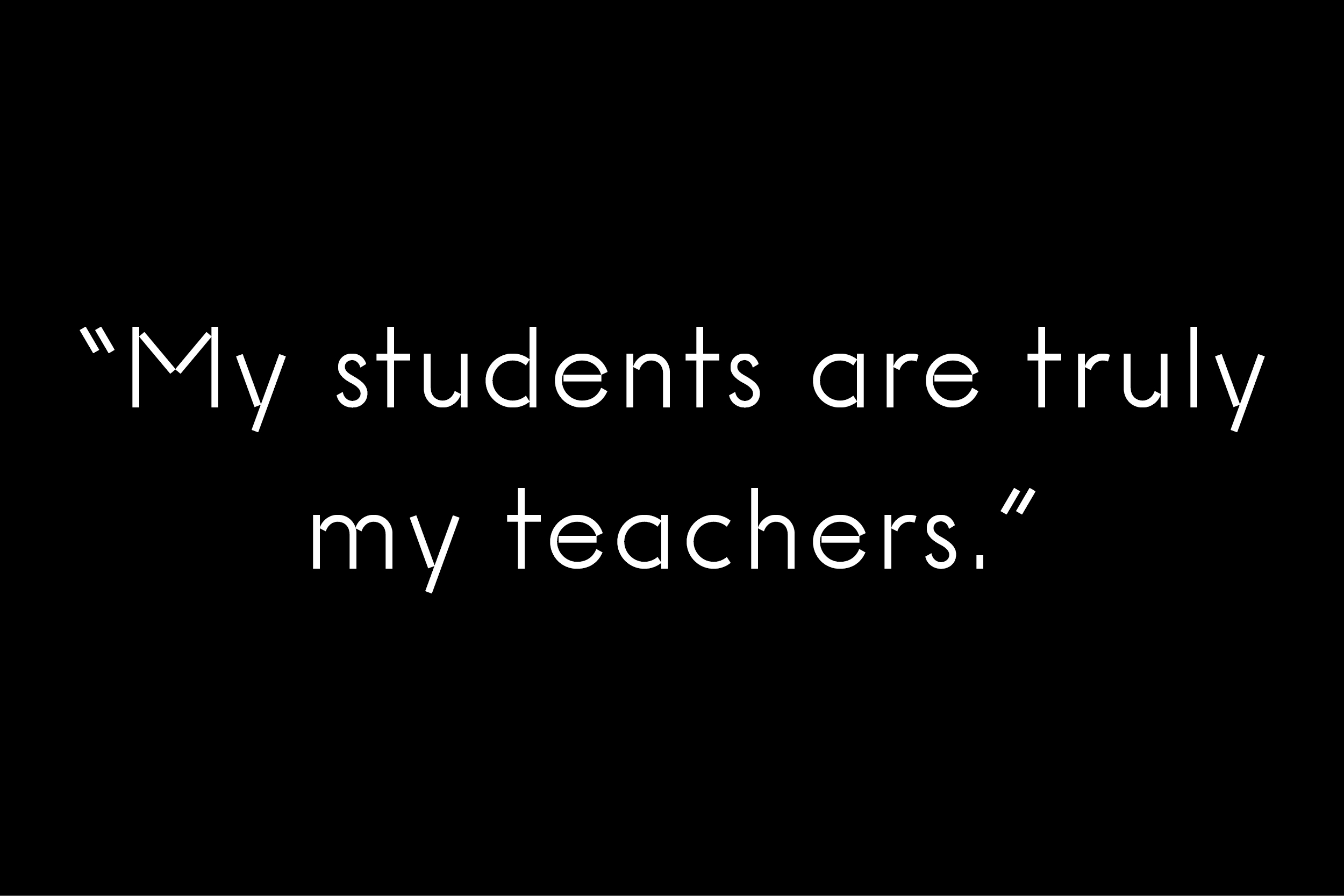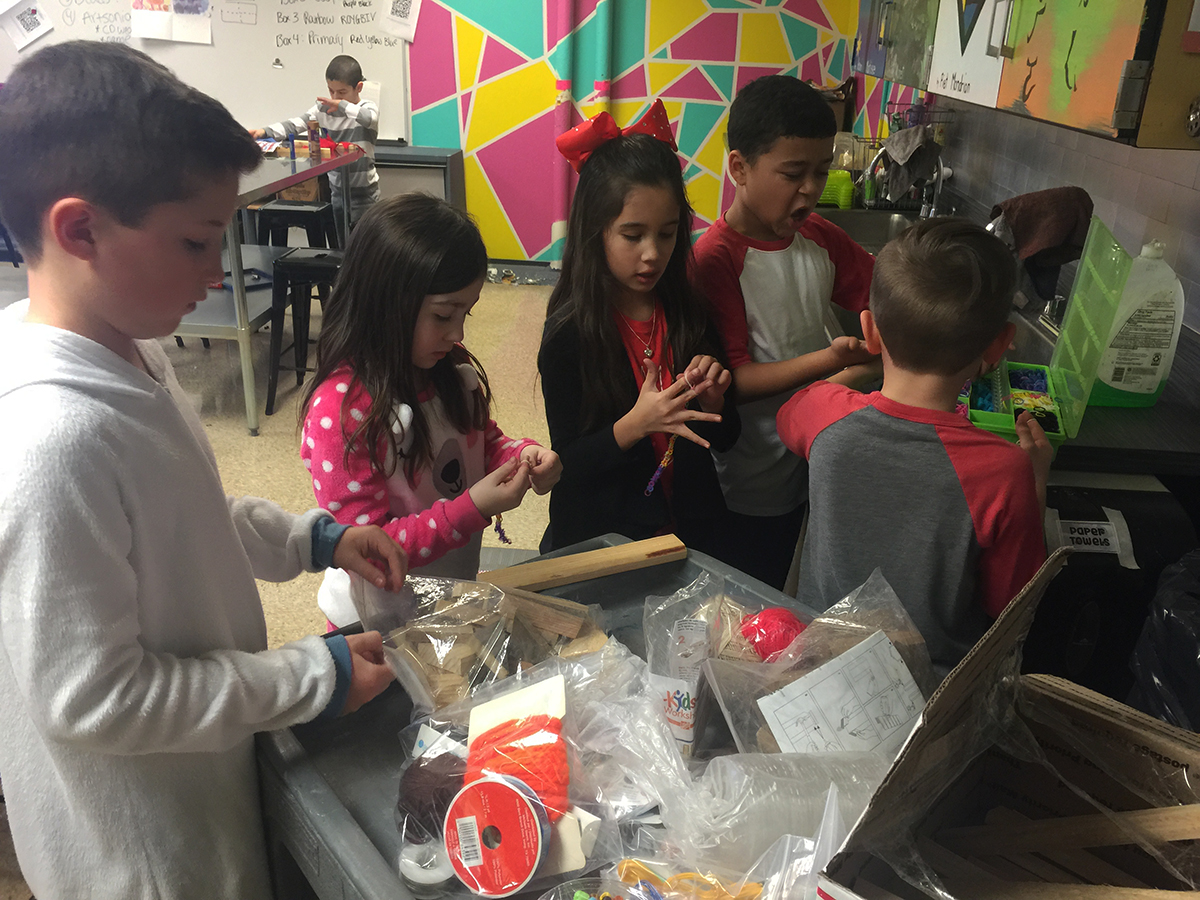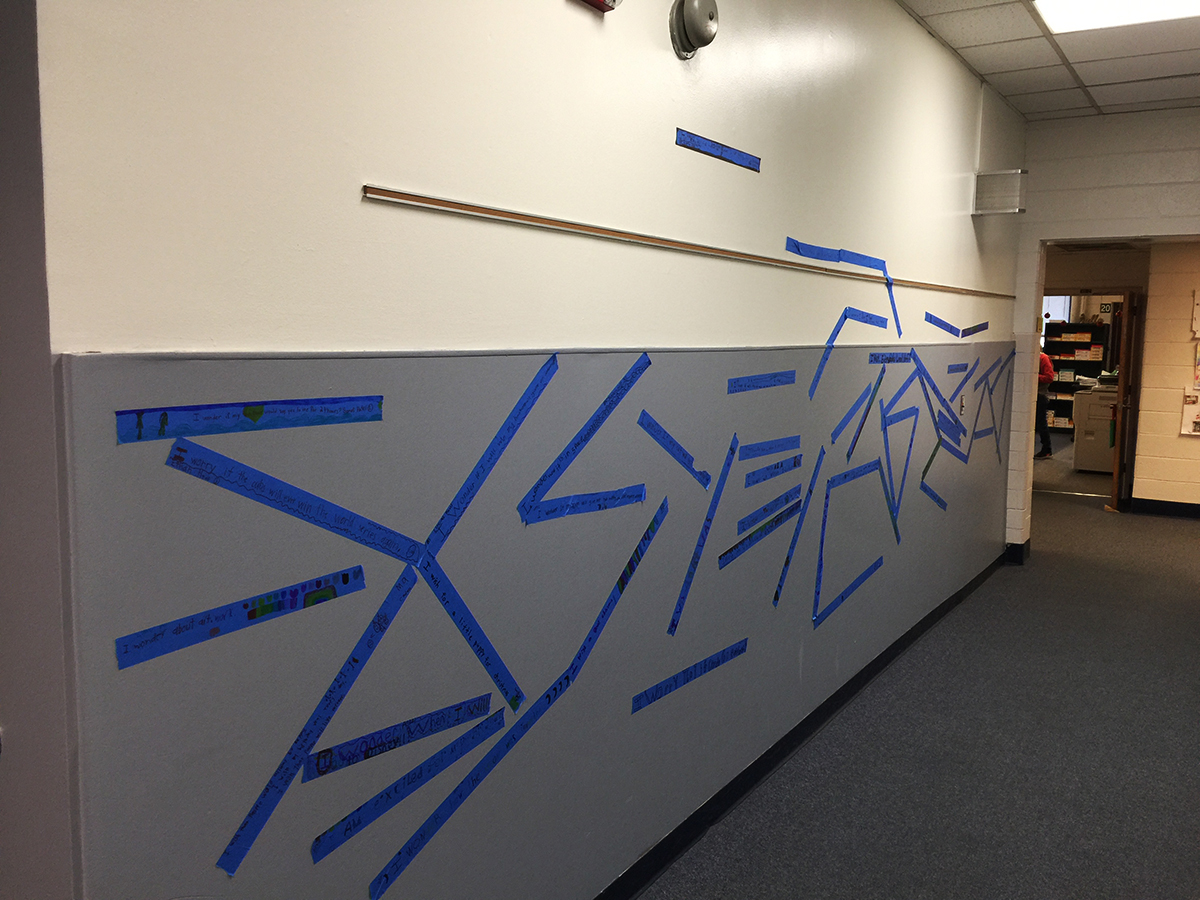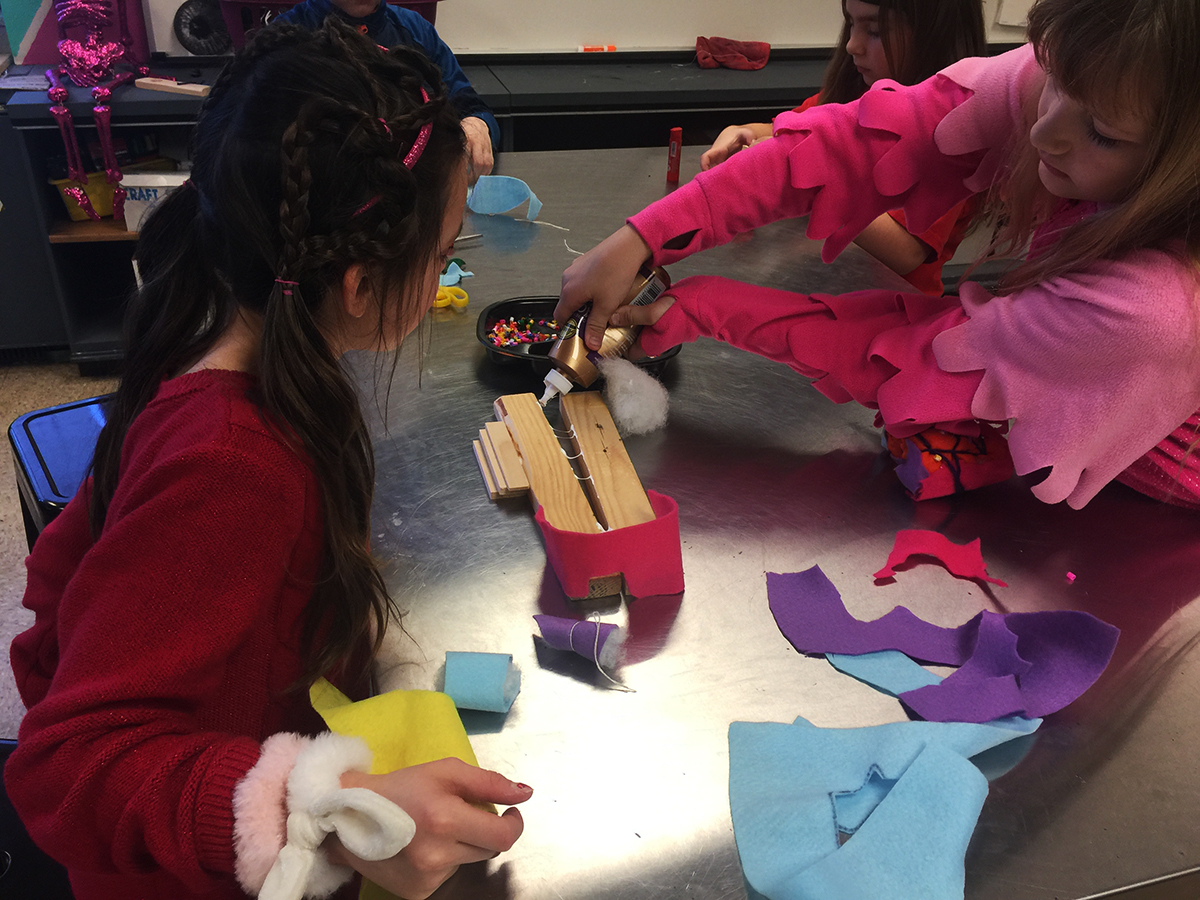
Dear Future Educators,
My teaching career has allowed me to build amazing relationships with a wide range of students, teachers, families, and communities over the years. One of the key components throughout it all—one thing that brought and kept us connected—has always been Art. My current school represents a small, seemingly close-knit community of a vast array of socioeconomic pockets. On the surface, class-communities appeared strong, but closer investigation revealed to me that relationships were much more shallow. It soon became evident that this lack of connection at the student-level was also reflected in the adult relationships at school, amongst neighbors and other facets of the “grown-up” community, myself included.
Through my project with the Museum of Contemporary Art, it was my hope to build and foster stronger connections between my students, reinforcing relationships as a bedrock and something that can potentially grow and trickle into the community at large. My big idea, “Where the Waters Meet,” is rooted in the need to come together, to realize and know we are all in it together . . . we are all one. Along the course of this project (and process), I became revitalized, my students empowered as the flow continuously changed course . . . meandered . . . and grew stronger and stronger, just like our connections.
Process
This process changed both the current and direction of my teaching practice in a much-needed way. I had reached a point in my career where I was feeling uninspired; my practice (both in teaching and art-making) had grown a little stagnant. It was a little scary in the beginning, but it was ultimately refreshing to dive deeper into my own relationships with my students while giving them—most importantly—more control of their creative processes and learning. My students became (even more so) my point of inspiration—my “big idea,” if you will—in developing curriculum to meet their needs. I was able to think bigger, and provide them more opportunities to discover connection with each other, build community AND create significant works of art. And for all of that, I am so very grateful.
My 3rd grade students rocked my world throughout this process. They reinforced to me that they are kind, smart and talented. They taught me that they are creative risk-takers, eager to connect with each other, and thrilled to discover new ideas and ways of creating and looking at art. They taught me that they have very real and important thoughts, worries, concerns and ideas. My students taught me that they are truly my teachers, and are fully capable of navigating the course and flow of what occurs in the Art room. My students demonstrated that they are able to be vulnerable, really sharing parts of themselves not typically presented at school. By doing so, they taught me that they are brave and empathetic, reaching out to those in need and sharing their own connections . . . showing that no one is alone.
My collaborators in learning—my students—contributed to leading aspects of our project in so many ways. Throughout all parts of this creative journey, they shared ideas and brought in outside experiences that transformed the initial direction of our exploration. They self-guided, proposed questions and developed solutions, all the while building strong relationships with each other and making connections both in and outside of school. They posed new avenues of inquiry, as well as shared experiences that redirected projects and added to group discussions. For example, their enthusiasm for certain pieces viewed during our visit to the MCA guided us to a new path I hadn’t even considered. Their aptitude for working with non-traditional materials, the extent of their concepts, and the strengthening of their classroom relationships and harmony spurred on even more of the same. After watching a video on Virgil Abloh, they devised the next branch of our process, inspired to keep going in this way of building a creative community.
One particularly noteworthy moment in our project was seeing my students find different ways and materials to express their ideas and messages. At this point, I had eased the control of creation into their hands and they THRIVED. This “hallelujah” was felt on all sides, I feel, as they began to carve their own course and make their own discoveries (in their art and each other). This really came to fruition during an art class when I wheeled out a cart of random found objects and materials. The actual act of creative collaboration allowed them to forge deeper connections with each other. I think, too, watching videos about Virgil Abloh speaking about his youth and its influence on his art really empowered them to see and feel like artists themselves. This MCA project allowed Art (and its influence) to become more accessible to them, to begin to see it and express it in their daily lives.
Conclusion
I would say the biggest obstacle (or figurative dam) I encountered was myself, my ego and my anxiety about the outcome of this project . . . something I hadn’t really even considered at the beginning of this process. I started off with very surface ideas/concepts, but once I let go and went deeper, I was better able to meet the needs of my students, assist them in building stronger connections, and strengthen my own relationships with them. When I let go and allowed my students to lead was when the transformation took place . . . for them, their art and relationships, and myself.
Some colleagues did question some of the projects we displayed, i.e. whether or not they were “true” art, and/or what the value was. However, this ultimately created an opportunity for sharing and discussion with the students about their ideas and experiences, creating a deeper level of understanding that ultimately transferred back into classrooms beyond my own. General Education teachers saw different facets of their students and gained a different insight to how they think, create and learn . . . allowing them more opportunities to connect, as well.
I think that both my students’ and my own understanding of the issue we explored transformed over time. We had identified the need and/or desire to connect and learn more about each other, but there was hesitation about diving in. As an abundance of new students entered the grade level at a rapid rate throughout our process, new opportunities for connection were literally handed to us...but there was still some resistance. It was only when “boundaries” became less rigid and more fluid that ideas, creation and connection gained momentum. I feel that they began to see the issue less as a directive and more as an experience, and something they could guide and that the results could be varied. As we meandered, we saw all of it was all okay and valuable.
Where do we go from here? Well, the waters (and ideas) continue to flow. This process sparked so many new conversations, connections and collaborations that I hope to see continue. This mode of exploring issues and concepts is something that has already begun to trickle into the rest of my classes and leaked into general education classrooms / the school community as a whole. However, our learning has recently changed course as current events have forced us into “social distancing.” How will we maintain these connections with students? With others? How can we come out of this stronger? This is what we will now explore.
With gratitude,
Megan



ENCOURAGE CURIOSITY AMONG COLLEAGUES
Art doesn’t have rules, but some people (especially adults) can have rigid expectations for what it should look like. Counter skepticism by encouraging curiosity. Differing opinions, when bridged with generosity, can lead to understanding, empathy, and insight.
Megan Stytz Verbic
Pioneer Path School
Megan Stytz Verbic NEVER saw herself as a teacher, but now finds herself entering her 15th (ish) year as a NBCT Visual Art Educator in grades pre-K–12. She spent the first half of her career in CPS, and now splits her days between 2 elementary schools in the small southwest suburban village of Channahon. Megan strives to make personal connections with her students . . . and thrives in guiding them in making their own connections through art. She has her students, on average, for 5 full years and loves seeing them (and their artwork) transform over time. In addition to teaching Art, Megan is a Certified Yoga Teacher who enjoys bringing lessons off of the mat and into the Art room.
